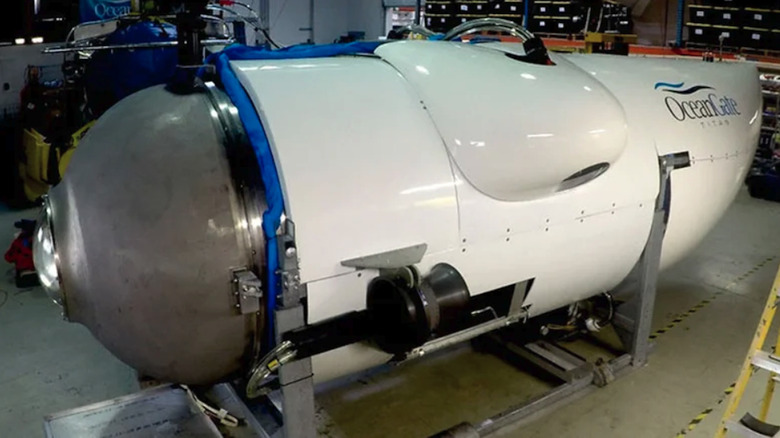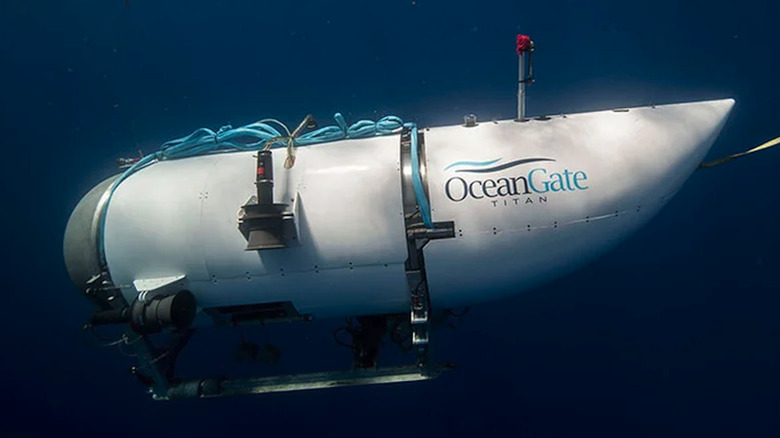New Leak Reveals The Titan Submersible Disaster Was More Horrifying Than We Thought
On June 18, 2023, the OceanGate Titan submersible was lost on an expedition to explore the wreck of the Titanic in the North Atlantic, taking five lives with it, including Stockton Rush, OceanGate's CEO. The Titan was reported to have imploded during its dive, killing the five-person crew nearly instantly. The initial loss of the submersible, the implosion, and the entire modus operandi of OceanGate and its tendency to use substandard materials were all the subject of international news for months following the accident. The implosion was blamed on the overall construction of the Titan, which relied heavily on carbon fiber and titanium.
Now, according to an extensive report by Wired, new details are coming to light about Stockton Rush, the Titan itself, and OceanGate's somewhat lax attitude toward safety and testing. It's an unfortunate reality that even extensive testing and research can result in failure that costs lives. It's another thing entirely to lie about said testing and research, which seems to be exactly what Stockton Rush did when releasing information about the Titan.
Lax attitude toward safety
If you were to take Stockton Rush and OceanGate's public statements at face value, you would be led to believe that the Titan submersible was built in collaboration with NASA, Boeing, and the University of Washington to withstand the high pressures of deep-sea exploration. It seemed like the Titan was the result of nothing but the best and brightest engineers and builders working together. After all, NASA's been to the moon, Boeing builds fighter jets, and the University of Washington is a world-class research institution. Right at the outset, Boeing and the University of Washington said that neither entity had anything to do with the Titan. As far as NASA's involvement, Wired reports that Stockton Rush announced the collaboration with NASA, only for nothing to come of it.
Even before the disaster, employees described the company as having a less than good attitude toward safety, instead emphasizing speed and cost. According to Wired's newly revealed leaks and interviews with sources close to OceanGate and Stockton Rush, the company had a long history of lying about the submersible, its construction, its testing, and who was involved.
The most damning piece of information that came to light is the overall lack of sufficient testing during the initial engineering phase of the Titan and employing needlessly dangerous cost-effective measures. Leaks revealed that tests of Titan's carbon fiber either failed repeatedly far short of operational depths and pressures, namely the Titanic's depth of 3,800 meters (over 12,467 feet) and the subsequent pressure of 6,500 psi, or testing was skipped altogether.

